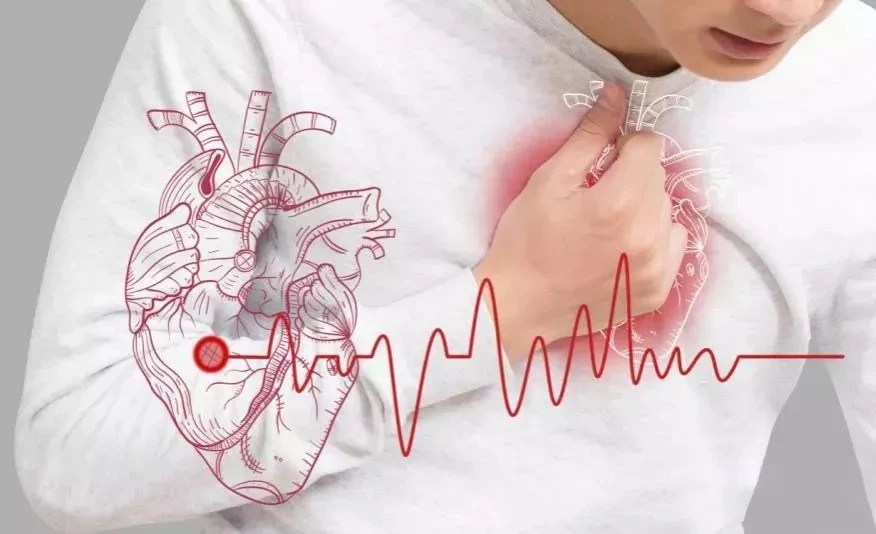

中國指南指出,T2DM的治療策略應該是綜合性的,並提出包括血糖、血壓、血脂、BMI在內的綜合控制目標,以期降低患者的併發症發生風險。
2018年4月,國家食品藥品監督管理總局(CFDA)已經批準了利拉魯肽注射液的說明書更新申請,更新共達25處之多,其中包括新增利拉魯肽的心血管結局試驗(CVOT)——LEADER研究的具體結果。
該研究表明,利拉魯肽可顯著降低2型糖尿病(T2DM)患者主要心血管不良事件(MACE)的發生風險13%(非劣效性檢驗p<0.001;優效性檢驗p=0.01),顯著降低心血管死亡風險22%(p=0.007),同時還顯著降低了擴展的MACE(主要MACE 、導致住院的不穩定型心絞痛、冠狀動脈重建或由心力衰竭引起的住院)風險12%(p=0.005),和其他次要終點的風險1。


降糖藥物研發和應用的目標,除了降低血糖,能否改善糖尿病患者心血管病變發生的風險,日益成為研究熱點。近年來,降糖藥物的CVOT結果如雨後春筍般登上各大主流學術雜誌。這種現象的出現並非偶然,在臨床需求未被滿足的背景下,降糖藥物註定要踏上變革之路,開始「心」征途。
心血管疾病(CVD):
控糖之路上的暗礁險灘
T2DM可累及全身多處組織器官,CVD是主要的血管併發症,包括心肌梗死、卒中、外周動脈疾病等。糖尿病患者心血管(CV)風險較高,罹患卒中的風險是非糖尿病患者的2-4倍2,發生下肢動脈粥樣硬化性病變的危險性較非糖尿病患者增加2倍3。CVD是導致T2DM患者死亡的首要原因4。
同時,糖尿病患者常合併高血壓、高血脂等多重CV危險因素。中國3B研究納入25817例糖尿病患者參與調研,其中12.2%僅合併高血脂,30.0%僅合併高血壓,29.8%同時合併高血壓和高血脂。血糖(HbA1c<7%)、血壓(SBP<130 mmHg, DBP<80 mmHg )、血脂(TC<4.5mmol/L)綜合達標的患者僅佔5.6%5。可見CVD是控糖之路上不可避免的暗礁險灘,合併的CV危險因素增加了糖尿病管理難度。
變革之路:
儘管困難重重,但人類改善糖尿病患者心血管結局的探索腳步從未停歇。綜合英國前瞻性糖尿病研究(UKPDS)、退伍軍人糖尿病試驗(VADT),糖尿病與血管疾病行動研究(ADVANCE)、控制糖尿病患者心血管風險行動研究(ACCORD) 等大型臨床研究的結果,提示強化降糖可降低微血管併發症發生風險,遺憾的是強化降糖對大血管結局的影響始終不明確6,7,8,9。
2008年,薈萃分析發現與安慰劑相比,羅格列酮使患者心肌梗死風險顯著增加,而CV死亡風險的增加也達到了有統計學差異的臨界值10,這一發現引發了對降糖藥物CV安全性的關注。隨後,美國食品藥品監督管理局(FDA)要求上市的新型降糖藥物在心血管高危人群中進行以心血管事件為終點且不少於2年的臨床研究,以確保降糖藥物的心血管安全性11。這一背景成為降糖藥物變革的驅動力,降糖藥物由此踏上「心」征途。


防治CVD多重危險因素,
綜合管理改善結局!
2001年美國糖尿病學會(ADA)學術年會上,大會主席Robert S提出T2DM的治療應「超越降糖」,全面防治CVD多重危險因素12。2003年ADA糖尿病指南上將血壓和血脂控制目標納入T2DM的治療目標中13。中國指南也指出T2DM的治療策略應該是綜合性的,並提出包括血糖、血壓、血脂、BMI在內的綜合控制目標,以期降低患者的併發症發生風險14。
正如Steno-2研究所示,降糖、降壓、調脂、抗血小板的綜合治療可顯著減少T2DM患者CVD和死亡發生的風險15。如果降糖藥物能同時改善CV多重危險因素,那可謂「一石多鳥」。
全球關於降糖藥物的CVOT研究,已為T2DM合併CVD及多種CV危險因素的防控提供有效策略。其中胰高糖素樣肽-1受體激動劑(GLP-1RA)利拉魯肽不僅有效降低血糖,還能減輕體重、改善胰島素抵抗、降低收縮壓、改善血脂譜16,17,18,19,20,21,對CV具有保護效應22,被推薦用於合併CVD及CV危險因素的T2DM患者4。
總結
CVD是T2DM患者主要的併發症,是控糖之路上的暗礁險灘。新時代背景下,糖尿病治療理念已經從單純控糖轉向綜合因素管理,以降低患者CVD等併發症發生風險。隨著CVOT結果的發布,新型降糖藥物對於CV的影響逐一被揭示,在這條「心」征途上,應用具有CV保護效應的降糖藥物將成為未來糖尿病治療的重要模式。
參考文獻:
1. 利拉魯肽 CFDA說明書
2. Centers for Disease Control and Prevention,2007. http://www.cdc.gov/diabetes/pubs/pdf/ndfs_2007.pdf;
3. 賈偉平,陸菊明,紀立農,等. 中國2型糖尿病防治指南(2017版). 中華糖尿病雜誌,2018, 10(1): 4-67.
4. American Diabetes Association. Standards ofmedical care in diabetes—2018. Diabetes Care, 2018, 41(suppl 1): S1-S159.
5. Linong Ji, Dayi Hu, Changyu Pan, etal. Primacy of the 3B Approach to Control Risk Factors for CardiovascularDisease in Type 2 Diabetes Patient. The American Journal of Medicine, 2013,126,:925.e11-925.e22.
6. Intensive blood-glucose control with sulphonylureasor insulin compared with conventional treatment and risk of complications inpatients with type 2 diabetes (UKPDS33). UK Prospective Diabetes Study(UKPDS)Group. Lancet, 1998, 352: 837-853.
7. Patel A, MaeMbaon S, Chalmers J, et al. The ADVANCE collaboartive gorup.Intensive blood glucose control and vascular outcomes in patients with type 2diabetes. N Engl J Med, 2008, 358: 2560-72.
8. Gerstein HC, Miller ME, Byington RP, et al. Theaction to control cardiovascular risk in diabetes study group. Effects ofintensive glucose lowering in type 2 diabetes. N Engl J Med, 2008, 358:2545-2559.
9. Duckworth W, Abraira C, Moritz T, et al.Glucose control and vascular complications in veterans with type 2 diabetes. NEngl J Med, 2009, 360: 129-39.
10. NissenSE,WolskiK. Effect of rosiglitazone on the risk ofmyocardialinfarction and death from cardiovascular causes. N Engl J Med, 2007, 356(24): 2457-71.
11. U.S. Food and Drug Administration. Guidance for industrydiabetes mellitus: evaluating cardiovascular risk in new antidiabetic therapiesto treat type 2 diabetes. Silver Spring, MD, 2008. Available fromhttp://www.fda.gov/downloads/Drugs/GuidanceComplianceRegulatoryInformation/Guidances/ucm071627.pdf).
12. William Jeffcoate. Diabetes:thinking beyond sugar. Lancet,2001, 357 (9274) : 2108-2108.
13. American DiabetesAssociation. Standards of medical care in diabetes—2003. Diabetes Care, 2003, 26(Suppl1): S33-50.
14. 中華醫學會糖尿病學分會.中國2型糖尿病防治指南.中國糖尿病雜誌, 2014, 22(8): 2-42.
15. Gaede P, Lund-Andersen H, Parving HH, et al. Effect of amultifactorial intervention on mortality in type 2 diabetes. N Engl J Med,2008, 358: 580-591.
16. M. Marre, J. Shaw, M. Br?ndle, et al. Liraglutide, aonce-daily human GLP-1 analogue, added to a sulphonylurea over 26 weeksproduces greater improvements in glycaemic and weight control compared with adding rosiglitazone orplacebo in subjects with Type 2 diabetes (LEAD-1 SU). Diabetic Medicine, 2009,26, 268–278.
17. MICHAEL NAUCK, ANDERS FRID, KJELD HERMANSEN, et al. Efficacy and SafetyComparison of Liraglutide, Glimepiride, and Placebo, All in Combination WithMetformin, in Type 2 Diabetes: The LEAD (Liraglutide Effect and Action inDiabetes)-2 study. Diabetes Care, 2009, 32: 84–90.
18. Garber A, Henry R, Ratner R, Garcia-Hernandez PA, et al. Liraglutide versusglimepiride monotherapy for type 2 diabetes (LEAD-3 Mono): a randomised,52-week, phase III, double-blind, parallel-treatment trial. Lancet, 2009,373(9662):473-81.
19. Bernard Zinman, JohnGerich, John B. Buse, et al. Efficacy and Safety of the Human Glucagon-LikePeptide-1 Analog Liraglutide in Combination With Metformin andThiazolidinedione in Patients With Type 2 Diabetes (LEAD-4 MetTZD). DiabetesCare, 2009, 32: 1224-1230.
20. D. Russell-Jones, A. Vaag, O. Schmitz, et al. Liraglutide vsinsulin glargine and placebo in combination with metformin and sulfonylureatherapy in type 2 diabetes mellitus (LEAD-5 met+SU): a randomised controlledtrial. Diabetologia, 2009, 52: 2046–2055.
21. Buse JB, Rosenstock J, Sesti G, et al. Liraglutide once aday versus exenatide twice a day for type 2 diabetes: a 26-week randomised,parallel-group, multinational, open-label trial (LEAD-6). Lancet, 2009,374(9683): 39-47.
22. Marso SP, Daniels GH, Brown-Frandsen K, et al. Liraglutide andCardiovascular Outcomes in Type 2 Diabetes. N Engl J Med, 2016, 375(4): 311-22.








